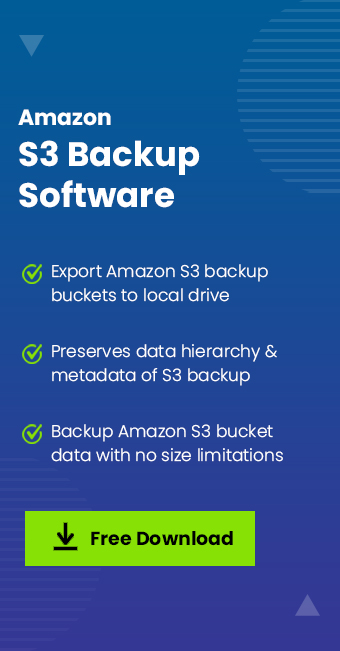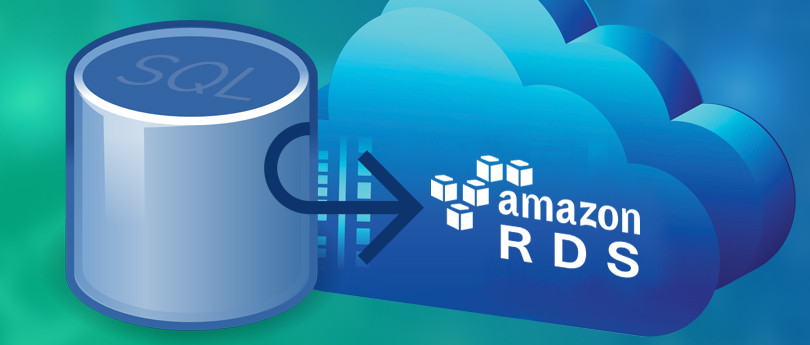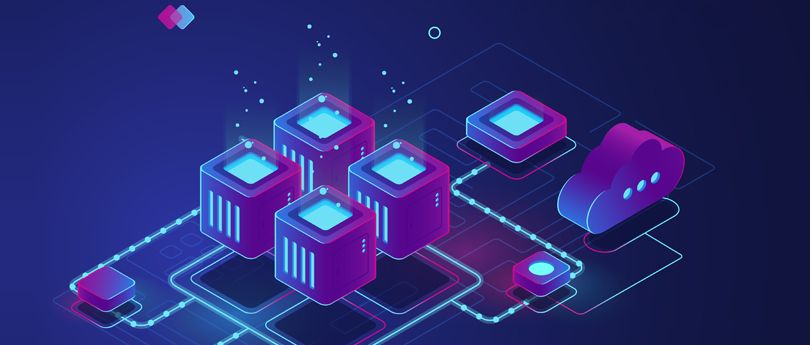Amazon S3 is an integrated part of the AWS cloud backup environment that works as a cloud storage platform to store and retrieve data backups. It presents organizations with security, trustworthiness, scalability, & easy accessibility by storing data of any type and size from anywhere without losing its integrity.
Amazon S3 stores data in buckets consisting of objects; every object has a file & metadata of your backup file that enhances the process. In your backup, there can be multiple buckets with entire authority to manage permissions, access, view logs, edit, etc.
The S3 environment is simply divided into classes to stabilize your backup plans as per your requirements. These classes support small to large organizations’ diverse backup policies and the acquisition of storage class facilities according to their needs and strategies.
The process of importing backup & retrieving bucket data to offline destinations is supported through the APIs using separate software. However, we will also guide you about the environment of Amazon S3 backup with an appropriate tool to restore data locally.
Types of backups in Amazon S3 using AWS Backup
AWS Backup is the epicenter of all your backup activities over the AWS platform, helping to centralize your backups. It simplifies the process of your S3 backup, which can establish a secure connection within AWS services and allow a single click to backup/restore. To operate smoothly with AWS Backup, you have to activate S3 versioning.
- Continuous backups: This backup is supported to restore the data resource backed up until the last 35 days. Usually, it will create a parent backup of your resource file and further update the constant backup data into log files. It uses point-in-time restore (PITR) to initiate quick restoration, assessing the log files from when the backup started.
- Snapshot backups: This backup, also known as a periodic backup, takes regular snapshots of your data, which can be taken in multiple timelines, such as 1 hour, 12 hours, a week, or a month, as per your rescheduling. It stores your backup data for an approximate period of 100 years.
- On-demand backup: This backup is used for testing or quick action purposes, as it backs up your resource data at that time. It does not support PITR restore as it does not update transaction logs and only stores the data that was once backed up.
Creating proper strategies for Amazon S3 backup
A proper action plan for your S3 backup is vital to establish easy management of your backups. It’s essential to analyze your business requirements regarding the data you will need to back up, the capacity of the data, and its frequency. It is better to use proper guidelines to create backup strategies to avoid errors while creating backup S3 buckets of your data resources or while restoring. Let’s find out some of the essential industrial practices for S3 data backups:
- Backup scheduling: The basic task to initialize safe backups is to properly schedule your backup accordingly. Large scale businesses often need backup data on a daily basis, so they must automate their backup with integration of AWS backup.
- Manage retention policy: Amazon S3, under its basic subscription of S3 classes, offers a dependable retention period of up to 30 days. However, in scenarios where you need to retain data for a more extended period, the flexibility of S3 Glacier Flexible Retrieval classes empowers you to do so.
- Backup versioning: Data backup versioning allows you to create multiple copies of your resource backup data into your S3 bucket. This feature supports backup files because if a recent file gets corrupted, you can still restore the last copied file before the recent one.
- Additional offline backup: Any extremely crucial file for the business must be saved in different locations. So, it is suggested that you create an offline backup of your S3 bucket to be safe from multiple corruption possibilities.
Understanding the use of Amazon S3 backup storage classes
Storage classes in S3 backup are based upon the users’ preference & designed to fulfill diverse backup purposes. Amazon S3 Storage classes provide quality space to keep your backup data. Classes in S3 are assigned to your bucket objects differently according to their individual identity. Choosing appropriate storage classes depends on the requirements of quick accessibility, cost-effectiveness, restoration speed, etc. Let’s discuss the different types of Amazons S3 storage classes below:
- Amazon S3 Standard: This class is dedicated to storing operational files daily. It can store files such as websites, gaming applications, documents, etc., while providing high-performance object storage, a low latency rate, and easy accessibility.
- Amazon S3 Standard Infrequent Access (S3 Standard IA): This class is more viable than S3 Standard for storing data that is not required daily and wants to be stored for a longer period. It also offers similar functionalities to S3 Standard in terms of performance, but it is more cost-effective per Gb backup and retrieval.
- Amazon S3 One-Zone Infrequent Access (S3 Standard One-Zone IA): The child class of the S3 Standard IA also stores infrequently used data. However, it is basically used to access infrequent data in the quickest time. Compared to other classes, S3 Standard One-Zone IA keeps data in one Availability Zone (AZ), where they use three AZs. It is best to store copies of resource file data and re-creatable data at a much lower cost.
- Amazon S3 Express One Zone: This storage class is partially similar to S3 Standard and is also used for frequently accessed data but with high-performing results. It provides an ultimate consistent single-digit millisecond request latency and 10x faster accessibility. By storing backup data and resources in the same AZs, it is more cost-effective than S3 Standard.
- Amazon S3 Intelligent-Tiering: According to its name, this class is intelligent because it performs automated action in migrating less-access backup files to low-cost tiers. The hierarchy of S3 Intelligent Tiering smartly monitors your unassessed data from 30 days to the S3 Standard IA tier, 90 days to the Archive Instant Access tier, and 180 days to the Deep Archive Access tier.
- Amazon S3 Glacier Instant Retrieval: This class is also known as archive storage, which stores data that has not been accessed for a long period. It costs much lower due to less accessibility, but it offers instant retrieval like S3 Standard. The benefits of instant retrieval of your Amazon S3 backup archive data are much higher for the user seeking balanced operations.
- Amazon S3 Glacier Flexible Retrieval (S3 Glacier): This class also works as the archive storage class as S3 Glacier Instant Retrieval and is cost-effective. It stores data that is required once or twice a year for needs like audits, business assessments, etc. The data stored in this class can be easily retrieved, even the larger set of data, but the process will take longer, and the data can be asynchronous.
- Amazon S3 Glacier Deep Archive: This is the lowest storage class and also the class used to store data for the longest time. It is very appropriate for business archive data for disaster management and for those who need it once or twice every 4-7 years. This can be said to be similar to tape libraries, but it stores data on the cloud, which is far better.
Use an automated tool to save Amazon S3 bucket locally
The AWS Backup environment allows you to protect your data as objects within S3 buckets. However, there are no direct solutions to restore your S3 backup data to offline destinations. However, you can do this with AWS-enabled software that integrates Amazon S3 APIs to move bucket data offline.
Amazon S3 backup software smoothly transfers numerous S3 objects to a local system without hampering its data integrity. It also preserves the actual attributes, path, and name of your Amazon S3 bucket. The tool has dynamic features that make it capable of saving S3 backup files of any size quickly.
Conclusion
Amazon S3 backup is the ultimate solution for businesses operating over the cloud and wanting to back up their data securely. The above guide delved into Amazon S3’s working environment and discussed its various modules. We have highlighted the different types of storage classes and what will be the most suitable for your requirements. However, organizations working on cloud-based models demand quick and reliable results for both data backup and retrieval. So, employing the robust Kernel Amazon S3 Backup software is suggested above to stabilize your business’s backup process.









